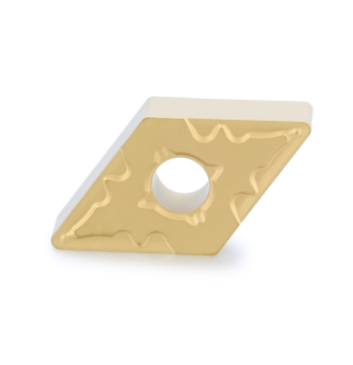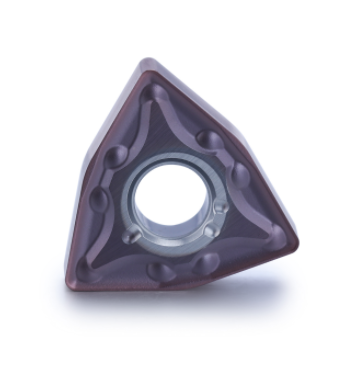Detailed Explanation Of Letters P, M, K, N, S, H In Carbide Insert
Views: 10466
Author: Site Editor
Publish Time: 2021-12-09
Origin: Site
Suppose someone asks you what P, M, K, N, S, and H represent in carbide insert? What is its cutting hardness? do you know? How would you answer this question? If you don’t know, just follow me to find out.
Type P:
In carbide insert, the cutting range of P products refers to carbon steel and cast steel, including 0.25-0.25% C quenching and quenching and tempering. Free-cutting steel includes annealing and quenching and tempering. Low-carbon alloy steel contains less than 5%, high-carbon alloy steel cast iron and tool steel including annealing and quenching and tempering series.
Type M:
In the M type, the range is relatively small. The stainless steel materials include ferrite/martensite, and the cast steel materials include martensite and austenite.

Type K:
The hardness of cemented carbide in the K-class cutting range includes ferrite, pearlite gray cast iron, nodular cast iron, pearlite ferritic malleable cast iron.
Type N:
Class N refers to uncured aluminum, refined alloys, cast alloys, and copper alloys include free-cutting steel, brass, and electrolytic copper.
Type S:
Type S refers to iron-based high-temperature alloys. Superalloy materials include nickel-based, cobalt-based, titanium-based, and titanium alloys.
Type H:
Class H refers to the cutting hardness of the blade in the range of hardened hardened steel, cast chilled cast iron, hardened cast iron, etc.

Cemented carbide classification:
Commonly used cemented carbide has WC as its main component. According to whether other carbides are added, it can be divided into the following three categories:
(1) Tungsten Cobalt (WC+Co) Cemented Carbide (YG) "Just process pig iron"
It is composed of WC and Co. It has high bending strength, toughness, good thermal conductivity, but poor heat resistance and wear resistance. It is mainly used for processing cast iron and non-ferrous metals. Fine-grained YG cemented carbide (such as YG3X, YG6X), when the cobalt content is the same, its hardness and wear resistance are higher than YG3, YG6, strength and toughness are slightly worse, suitable for processing hard cast iron, austenitic stainless steel , heat-resistant alloy, hard bronze, etc.
(2) Tungsten Titanium Cobalt (WC+TiC+Co) Cemented Carbide (YT) "Main Processing Wrought Iron"
As the hardness and melting point of TiC are higher than that of WC, compared with YG, its hardness, wear resistance, red hardness are increased, the bonding temperature is high, the oxidation resistance is strong, and it will generate TiO2 at high temperature, which can reduce the adhesion. But it has poor thermal conductivity and low bending strength, so it is suitable for processing tough materials such as steel.
(3) Tungsten Titanium Tantalum Cobalt (WC+TiC+TaC+Co)) Cemented Carbide (YWYS) "Mainly process difficult-to-process materials such as heat-resistant steel, high manganese steel, stainless steel, etc."
Adding TaC (NbC) on the basis of YT hard alloy improves the bending strength, impact toughness, high temperature hardness, oxygen resistance and wear resistance. It can process steel, cast iron and non-ferrous metals. Therefore, it is often called general-purpose cemented carbide (also known as universal cemented carbide).
As a professional supplier of cabride insert, we are happy to help you. If you have any more questions, please contact us immediately.
If any other question, please contact us:
- Tel: +86 769-85646282
- Email: info@dohrecnc.com
- Address: Room 203, Building 2, Songhu Zhigu Research Center, No. 6, Minfu Road, Liaobu Town, Dongguan, Guangdong, China




